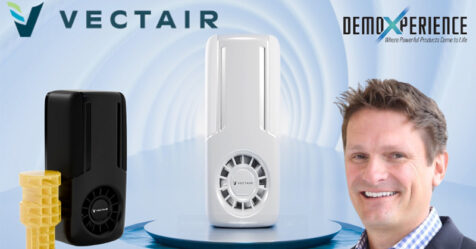In health care environments, cleanliness is crucial because it can prevent the spread of potentially deadly infections. According to the U.S. Centers for Disease Control and Prevention (CDC), on any given day in the United States, one in 25 hospital patients acquires a healthcare-associated infection (HAI).
To limit the spread of bacteria from hospital surfaces to staff and patients, facilities must look for innovative ways to maintain cleanliness and combat an increasing number of biologic threats. Hands-free (robotic) floor care scrubbers that can maneuver the halls of a hospital on their own are quickly becoming a sought-after solution in the fight against infection. In fact, a recent Business Insider Intelligence Report predicts that by 2019, the market for consumer and business robots will have an estimated value of US$1.5 billion.
Cleaning Challenges in Health Care Environments
As previously mentioned, the containment of bacteria is an important issue impacting health care facilities. If floors aren’t cleaned with purified water, bacteria and viruses can spread, thus increasing the risk of HAIs. However, cleaning staff need to work around a number of other issues that also exist in health care environments, including:
- Reduced chemical waste: Chemical costs can increase and cleaning performance can suffer if a machine uses chemicals inefficiently or cleaning is inconsistent.
- Patient satisfaction: Loud machines can disrupt patients who are trying to rest. Machines requiring multiple trips by staff to fill tanks and numerous passes across the floor to pick up dirt and water may inconvenience patients and block hallways.
- Hospital feedback: Health care facilities must also be concerned with the Hospital Consumer Assessment of Healthcare Providers and Systems (HCAHPS) survey, which reports patients’ perspectives of their hospital experience and provides a national standard for facilities to aspire to reach. A clean and quiet environment, and a hospital visit free of HAIs, can help organizations maintain higher patient satisfaction scores.
The above challenges are not the only ones impacting health care professionals and facilities. There are also concerns about the rising cost and scarcity of labor, an aging workforce, and the increased demand for data.
Addressing Health Care Facility Challenges
Many facilities must contend with keeping costs low by maintaining a small cleaning team. Because robotic machines allow operators to clean floors with the push of a button and then walk away, employees have more time to address hot spots or high-touch areas where germs reside. By reassigning staff to higher-level projects, more cleaning can be done in the same amount of time, thus improving the bottom line.
Facilities are also finding that employees remain in the workforce beyond typical retirement age. An aging workforce benefits greatly by using automated machines. Employees can operate one or more machines at the same time, knowing that they are intelligent enough to work on their own. Simplicity is also key for organizations that experience high turnover because employees can train to use robotic machines in a short amount of time.
Facilities are increasingly looking for ways to store data electronically in order to simplify and speed up processes. Hands-free machines with wireless reporting systems may track information such as machine location, run time, the date and duration of last usage, and any maintenance issues. Remote monitoring allows the service team to determine which units may need maintenance before an issue occurs, optimizing machine uptime and extending the life of the machine.
Finding the Ideal Machine
There are multiple robotic floor care models from which organizations can choose. Some are designed for hard surfaces, while others are better suited for carpets. The hospital facility manager should consider a number of factors when purchasing a machine, including:
- Ease of use: Machines should be easy to operate and able to work around floor layouts and obstacles without help from employees. Today’s more advanced machines use sensors to gather a 360-degree view of the surrounding area to detect and avoid walls, stairs, and people. They should also allow operators to easily switch to manual mode.
- Safety: The machine should offer excellent water pickup so that floors are left dry and slip-and-fall accidents can be eliminated. Health care units may use an ultraviolet (UV) light to kill viruses and bacteria from the water placed on floors to better protect patients.
- Sustainability: The unit should promote sustainability by conserving water and chemicals. Some green machines reduce, reuse, and recycle water to limit the amount of water and chemicals they use during a cleaning shift, lessening environmental impact and providing clean, reusable water.
- Reliability: Machines should have an acceptable battery life so they can run for a few hours at a time without needing a recharge. Machines that allow operators to program specific layouts may help to clean larger areas in more complex facilities.
- Maintain a quiet environment: The machine should operate at lower A-weighted decibel (dBA) levels to ensure that patients and visitors are not disturbed.
A Prescription for Success
Cleaning personnel working in healthcare environments are the first line of defense between patients and potentially deadly bacteria and viruses. They must not only clean efficiently to keep costs low; they must also perform great work in order to eliminate the potential for HAIs, and the right technology can help them get there.


